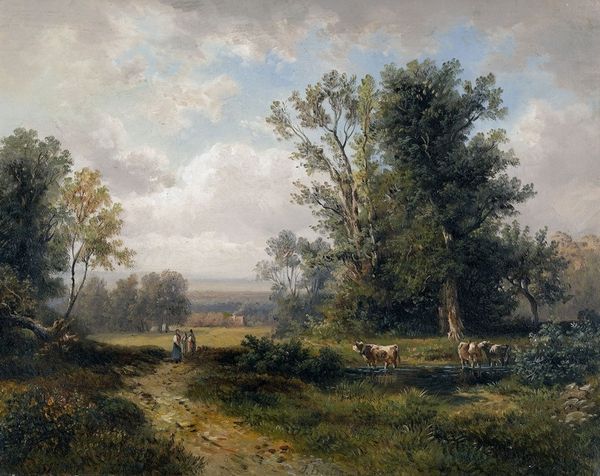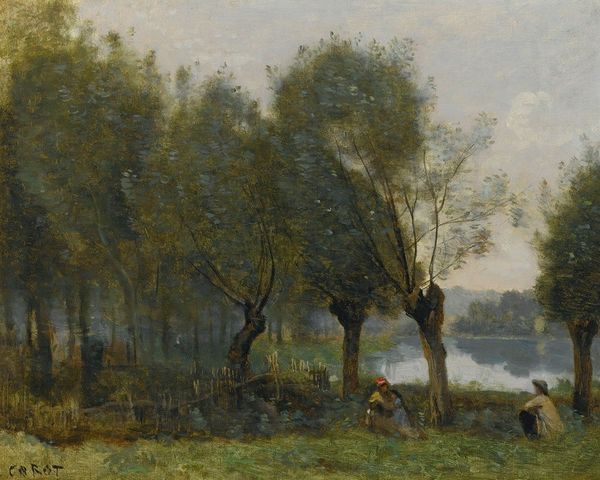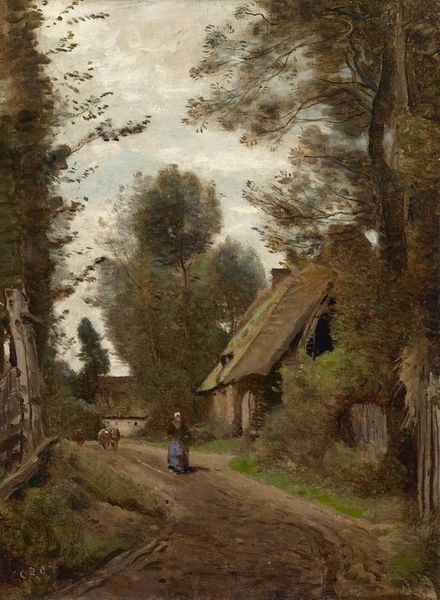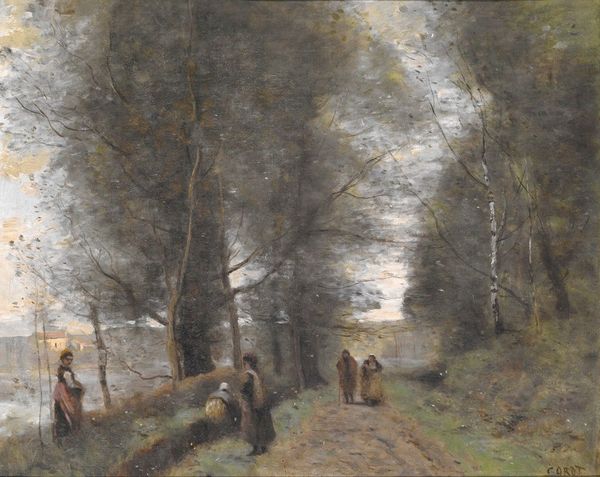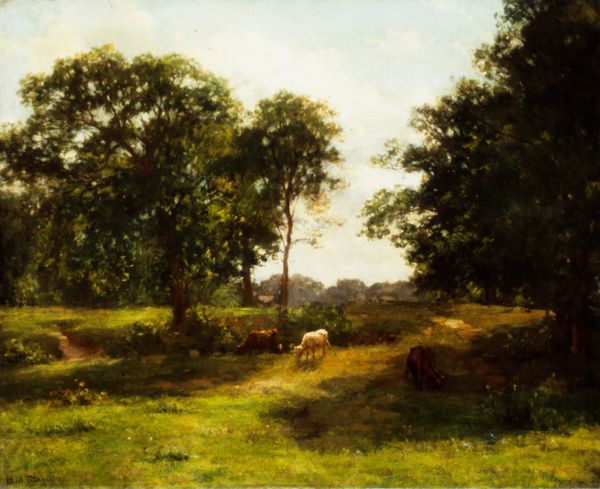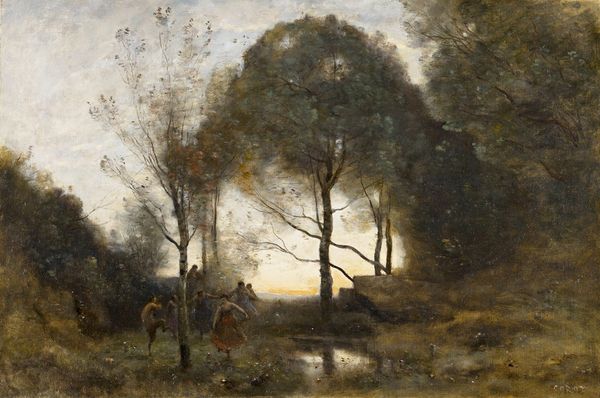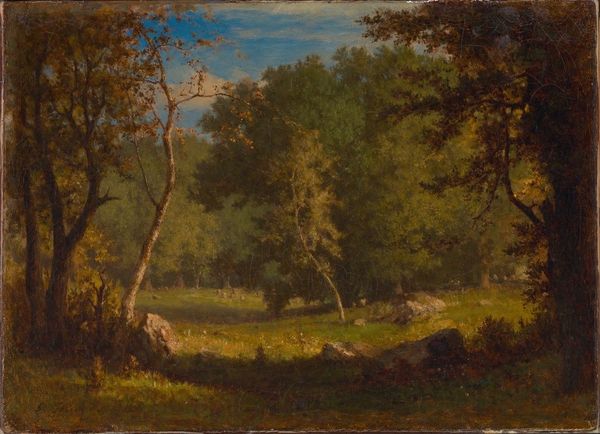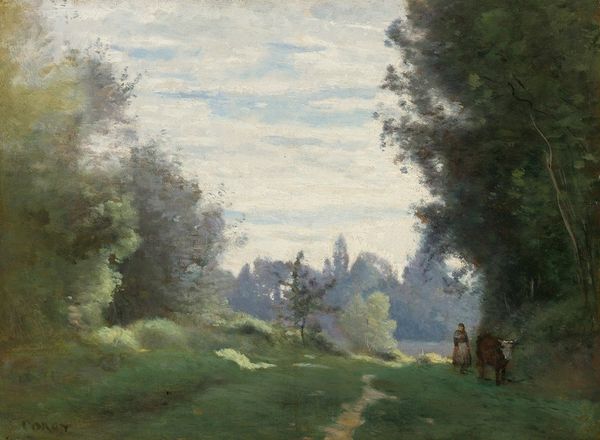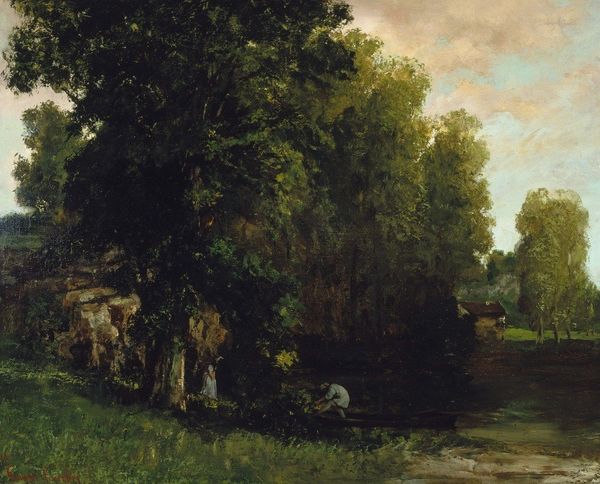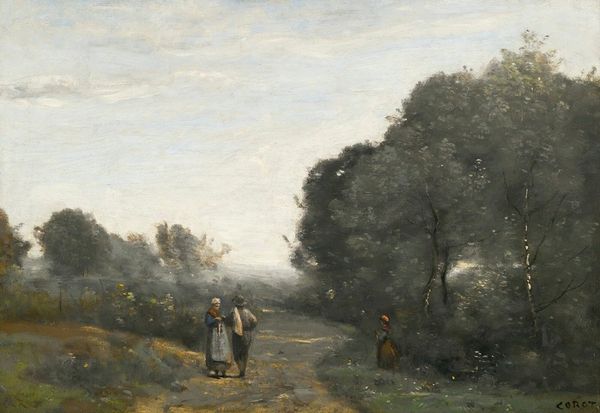
Dimensions: 129.5 cm (height) x 179.5 cm (width) (Netto)
Editor: So, this is Edvard Bergh’s "Beneath the Birches. Motif from Mälaren," painted in 1870. It’s an oil on canvas. There's such a calm feeling here, despite the activity of the figures driving their animals. What strikes you most about this work? Curator: Well, seen through the lens of its time, this idealized depiction of rural Sweden is incredibly potent. Consider the sociopolitical climate: 1870 marks a period of significant emigration from Sweden, driven by poverty and land scarcity. Editor: Right, the difficult agrarian conditions. Curator: Exactly. Bergh's painting presents a counter-narrative, romanticizing rural life precisely when so many were compelled to leave it. Look at the figures – they seem content, even picturesque, in their labour. Do you think this painting served to reassure those who remained or perhaps entice Swedes to stay? Editor: It could be both, a kind of nationalistic reassurance. The scene feels staged in a way, idealizing a disappearing way of life. So it's less about documenting reality and more about creating an image, for public consumption and for posterity. Curator: Precisely. How might institutions of the time have embraced and promoted such imagery? Editor: Perhaps galleries and museums showcased pieces like this to support a sense of national identity. Thinking about it now, I see a dialogue between a harsh reality and an attractive myth. Curator: Indeed. And it shows how art plays a complex role, sometimes reflecting, sometimes shaping social perceptions. Thank you for pointing this out; I will never see Bergh's painting in the same light!
Comments
No comments
Be the first to comment and join the conversation on the ultimate creative platform.
